I can trace back various lines of my maternal family in the Rastrick area for over 350 years. The list includes old Rastrick surnames such as Knowles, Garside, Thorpe, Marsden, Walker and Bottomley.

To the left is the baptism of my 5 x great grandfather, William Walker at the old St. Matthew’s chapel, Rastrick on the 16th February 1728. Written in Latin, the baptism entry reads: Gulielmus f. Benjaminis Walker de Oaks green (William son of Benjamin Walker of Oaks Green, Rastrick).
Later in life, William Walker married Tamar Walker (no relation hopefully) at St. Mary’s, Elland on the 12th September 1751 and went on to have several children.
On the 2nd July 1759, William, along with two of his siblings, James and John, is named on the list of 117 Rastrick inhabitants aged between 18 and 50 years of age, who were liable to called up to serve in the 2nd Regiment of the West Riding Militia. The list included many of my family surnames and was created because of the perceived threat by the French to invade British shores, which of course never happened.
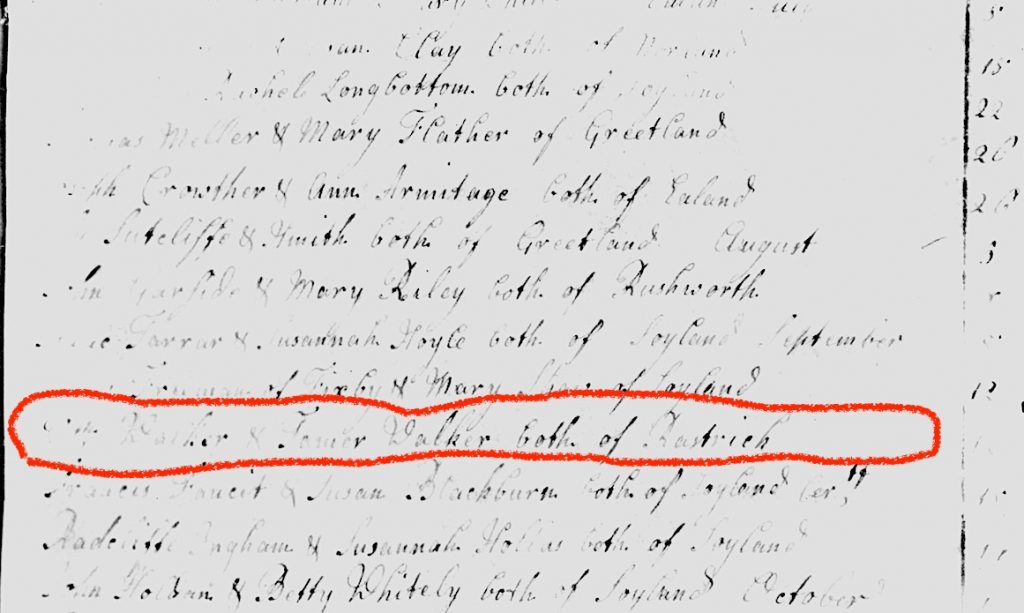
William and Tamar Walker had several children, including a son who was also named William. He was baptised at the old St. Matthew’s chapel on the 26th December 1757 and is my 4 x great grandfather.
He married Mary Thorpe of Almondbury at St. Mary’s, Elland on the 6th November 1783. William and Mary had one son and four daughters before they died in 1830 and 1827 respectively. They were laid to rest at Bridge End chapel where my family connection lasted until the closure of a later church in 1976.
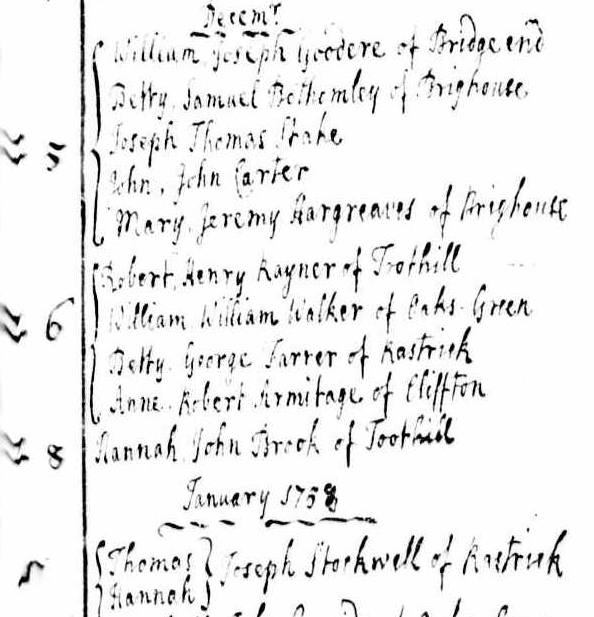
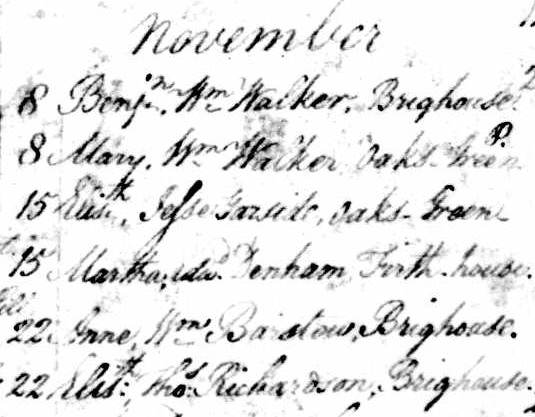
It was one of the daughters, Mary, who married into the Bottomley family, also from the ’top end’ of Rastrick. Mary was baptised at the old St. Matthew’s chapel on the 8th November 1789 (the current building dates from 1798).
Mary married William Bottomley at Halifax Parish Church on the 2nd February 1815.
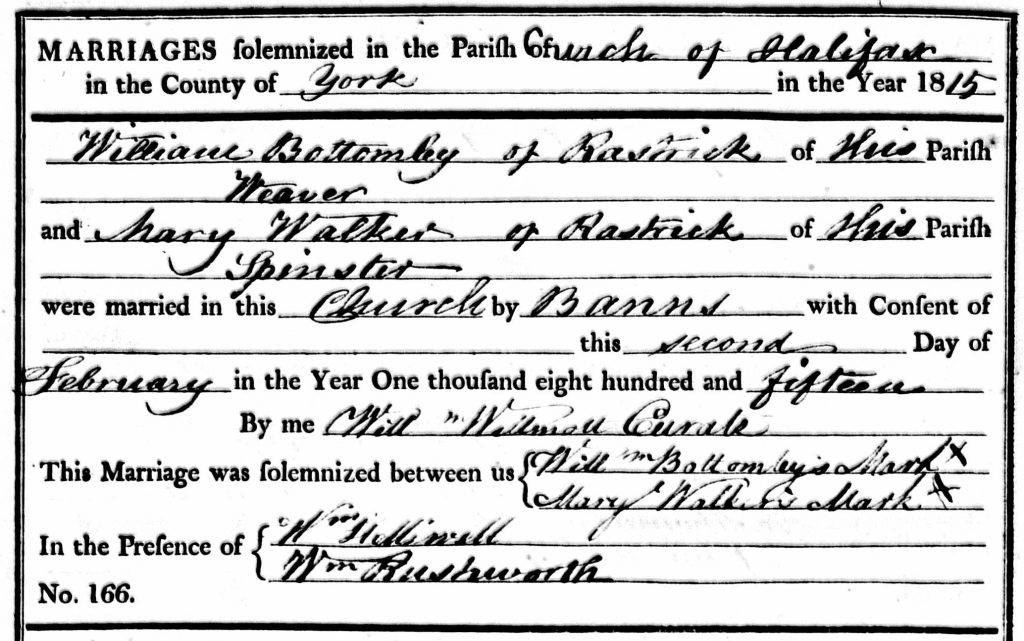
William and Mary had nine children, four sons and five daughters. Thanks to the meticulous records that were kept at Bridge End chapel by the minister, Rev. Joseph Hemus Crisp, I know that there weren’t any other children that could have been missed due to the high infant mortality rate because he actually gave full details of both parents, occupation of father, date of birth and baptism date of the child and how many sons and daughters had been born previously. William and Mary had their youngest three children all baptised on the 1st March 1837 though why they waited for so long when the previous six children had all been christened soon after their birth, I am not sure.
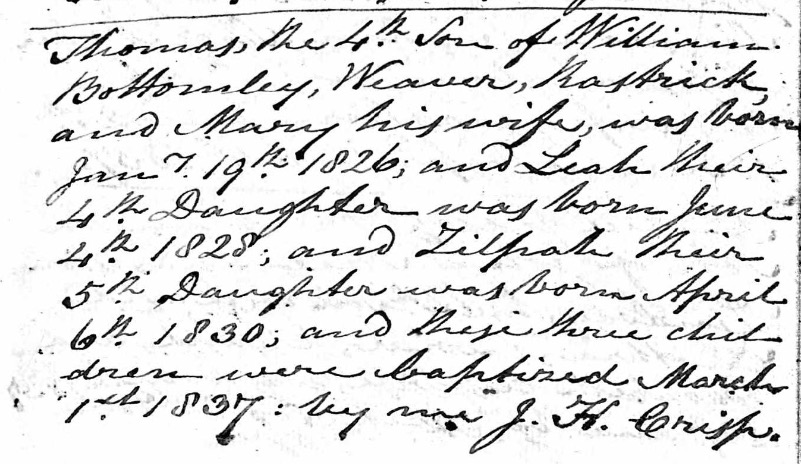
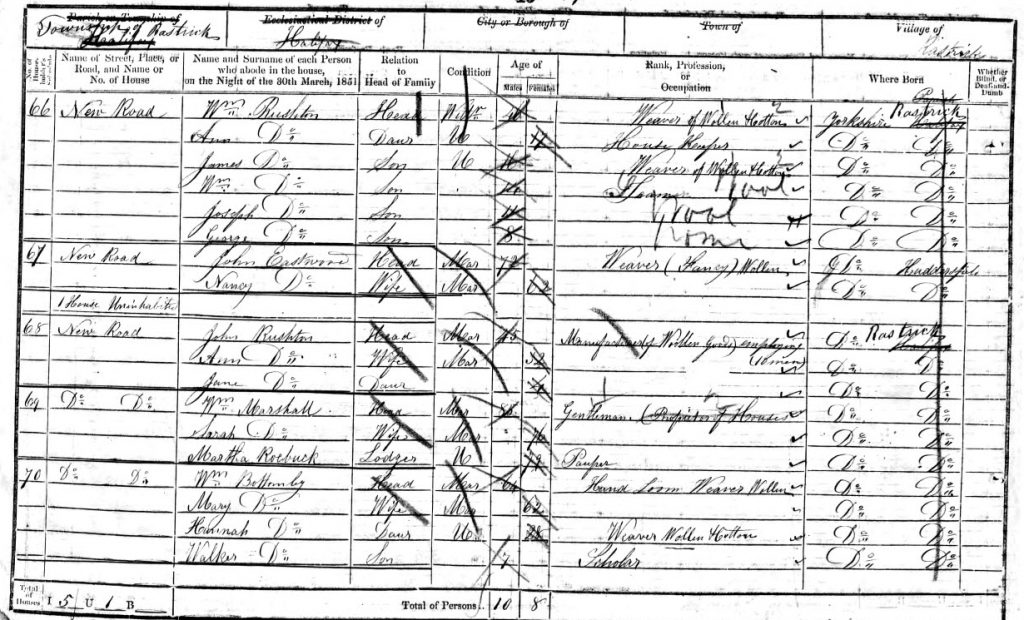
The family lived at New Road (New Hey Road), Rastrick and whilst they were connected with Bridge End chapel at the bottom end of Rastrick, they were also founder members of New Road Sunday School from the opening day in April 1837. William worked as a woollen fancy weaver which meant that he wove woollen cloth on a hand loom at his home. He was paid for the amount of work he carried out, probably by one of the Helm family. The merchant would have left the spun yarn along with weaving instructions and collected it at a later date before taking the finished product to market. The term ‘fancy’ refers to the Jacquard loom which wove more intricate patterns than simple plain weaving. They were capable of producing the highly fashionable waistcoats of that time but this was a period when the Industrial Revolution was in full swing and mills were starting to appear in the area, signalling the death of the cottage weaving industry.
William died in 1861 and was buried at the rear of the new Bridge End chapel which had been completed just five years before in 1856.
He was buried in Plot A58 along with two of his daughters, Ruth (1839) and Zilpha (1849) and a grand-daughter, Emma who died in infancy in 1859.
The eldest of the nine children was John Bottomley. He was born on the 7th January 1816 and baptised at Bridge End on the 3rd March the same year.
Like his father, John was a woollen fancy weaver at the time of the 1841 census and continued to be a weaver for the remainder of his life. He lived in various homes just off New Road, at Providence Place, Marshall Row and Garrett Row. He married Jane Jubb at St. Mary’s, Elland on the 22nd June 1845 and they went on to have seven children, five girls and two boys.
To the right can be seen John’s baptism record from 1816, his marriage register entry from 1845 and a copy of the 1861 census when his family lived at Marshall Row, Rastrick.



John Bottomley died on the 14th February 1888 and buried in Plot G60 at Bridge End. A family story tells how his wife Jane was so upset at the death of her beloved husband that she took to her bed and never got up again. My grandmother said she lost the will to live and died of a broken heart on the 17th April, just 53 days later.
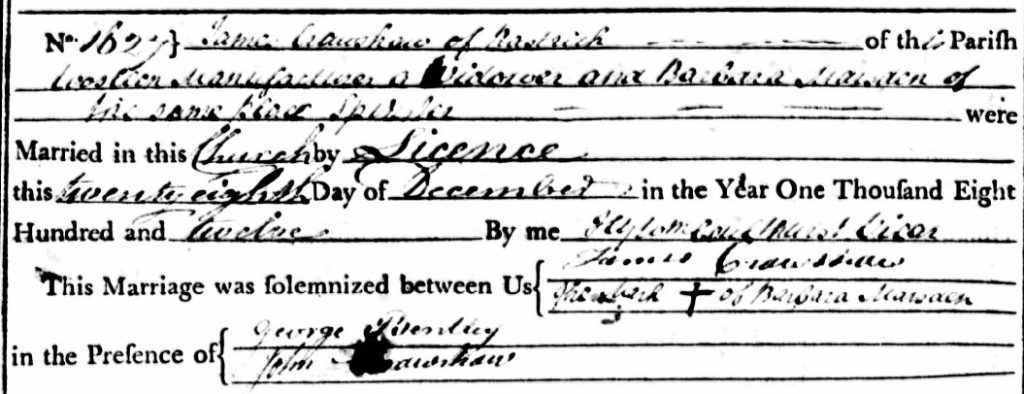

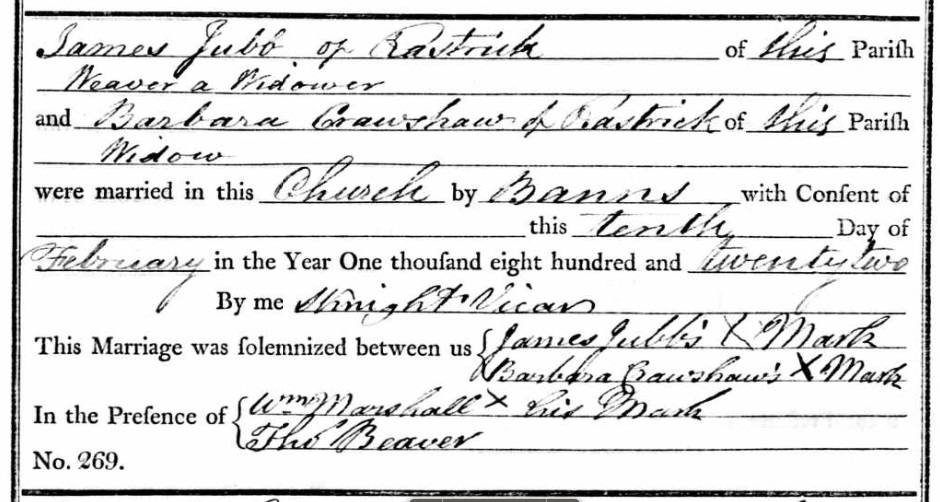



Going back to Jane Jubb, this story proves how fate can dictate our lives in so many ways. Certain things happen which, had they not occurred, we would find ourselves in a totally different situation to what we are in now. If the following unfortunate and sad circumstances had not happened, I would not be here at all. Jane was the daughter of James Jubb and Barbara Marsden and was born on the 6th July 1822 and baptised at St. Matthew’s, Rastrick on the 1st September that same year. Her father James was born at Rastrick in 1794 and he married Ruth Noble who was one year younger than himself, at Elland in August 1818. They had a daughter Ann who was born the following July but Ruth died aged just 25 and was buried at Bridge End on the 1st May 1821, leaving James to bring up their young daughter alone. James had other ideas though and by the following February, he was walking his second wife, Barbara Crawshaw up the aisle at the Halifax Parish Church of John the Baptist. Barbara had come from similar circumstances to James in that she was a widow. Having been born Barbara Marsden, she married James Crawshaw in 1812 at Halifax before his premature death.
James and Jane went on to have three children of their own but once again tragedy struck when their son John Allen died in 1828 aged just 7 months. As if that wasn’t enough, James then passed away in June 1829 at the age of 34 years leaving Barbara twice widowed at just 35 years old. They were truly tragic times where life came and went in a fleeting breath.
Jane went on to live a full and healthy life and by the time she died in May 1879, aged 85 years she was grandmother to 16 children. She is buried in Plot V7 at St. Matthew’s.
As mentioned already, John and Jane Bottomley had seven children:-
Three of the girls, Ruth, the eldest (1845-1915), Zilpha (1851-1916) and Alice, the youngest (1866-1916) remained spinsters, living with their parents until their deaths in 1888. After that, the sisters remained together throughout the whole of their lives. Ruth was more like a mother to Alice as she was over 20 years her senior and Ruth is shown as the head of the household on all the census records whilst one or both of the other sisters worked in the mill at Spout, just down the track from their home at 13, Mount Pleasant.
The three sisters died within seven months of each other, Ruth on the 9th June 1915, Alice on the 18th January 1916 and Zilpha on the 18th March 1916. As in life, the sisters remain together in death and are buried in Line 15 Row 51 at Carr Green Cemetery, Rastrick but were never given a headstone.
Another of the sisters was Sarah Jane, born 2nd February 1848. She married John Thornton at Bridge End on the 9th October 1873. John was a member at Bridge End but was also a superintendent and teacher at New Road Sunday School where no doubt the couple first met. John was the son of Samuel Thornton, a cloth manufacturer of Elland Edge and the grandson of William Helm, a cloth manufacturer of New Road, Rastrick who built Spout Mills in 1850. John had been privately educated at Rishworth Grammar School and went on to be involved in woollen manufacturing like his family before him.
The Bottomley’s thought that marrying into the Thornton family was well above their status but it was to be short lived. The teachers records at New Road show that Sarah Jane was absent through illness on the 13th November 1874. She never made a full recovery and died on the 11th October 1875. No children were produced from the marriage. John was distraught and was himself absent in the teaching registers at New Road for many months but he made substantial contributions towards the growth of the Sunday School over the ensuing years until his death in 1930. Sarah Jane was laid to rest at Bridge End in a grave which John Thornton later signed over to the Bottomley family and her parents were eventually interred within the same plot upon their deaths.
The fifth daughter was called Emma. Very little is known of her as she died in August 1858 aged 15 months and was buried at Bridge End in a grave later occupied by her grandparents in Plot A58.
The eldest of the two sons was Charles Bottomley, known as Charlie. He was born in 1852 and married Hannah Roebuck on the 9th October 1875, just two days before his sister Sarah Jane passed away. Charles worked originally as a cloth presser but turned his hand at farming in the late 1880’s, leasing land at Arnold Royd, Lower Edge, Rastrick for over 25 years. This land was then later farmed by members of his wife’s family, the Roebucks.
Charles and Hannah had two sons and two daughters but it is their son Norman who many older residents of Rastrick will remember. Charles took over Lower Moor Hey Farm on Pinfold Lane before the 1st WW and his son Norman and grandson Edgar continued to farm at that location and at Ridge End Farm where descendants of Charles Bottomley still farm the land to this day.
The final child that I am going to discuss is the second born son, John William Bottomley, my great grandfather. He was known as John William all his life, never only by just his first christian name. John William was born in Rastrick on the 25th January 1863. He was an apprentice painter in his early life and was a regular worshipper at both Bridge End and New Road. He married Priscilla Marsden on the 13th April 1885 at the Square Chapel, Halifax. I have no idea why the couple chose to be married there but suspect it was something to do with their first child, Elsie being born just three months later ! As religious people, it is possible that they didn’t want gossiping locals to know when they married because ‘being with child’ out of wedlock carried a certain stigma in Victorian Britain.
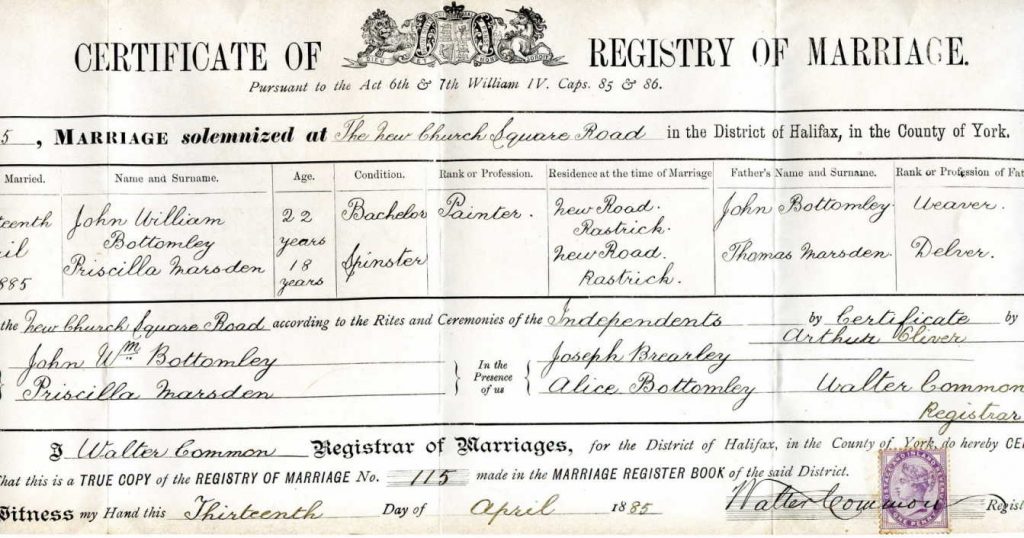
John William’s handwriting was immaculate and he was elected to various church committees, usually as the secretary but he also served on the Rastrick Golden Jubilee celebrations of Queen Victoria’s reign in 1887, the Edward VII coronation committee in 1902 and the George V coronation committee in 1911. He eventually gave up his work as a painter and paperhanger, putting his copperplate writing skills to full use by finishing his working life as a book-keeper.
He was a keen cricketer and passed on his love of the game to his sons. He was the secretary of the New Road Cricket Club who played at Badger Hill, a club that became synonymous with the Bottomley name for many years after.
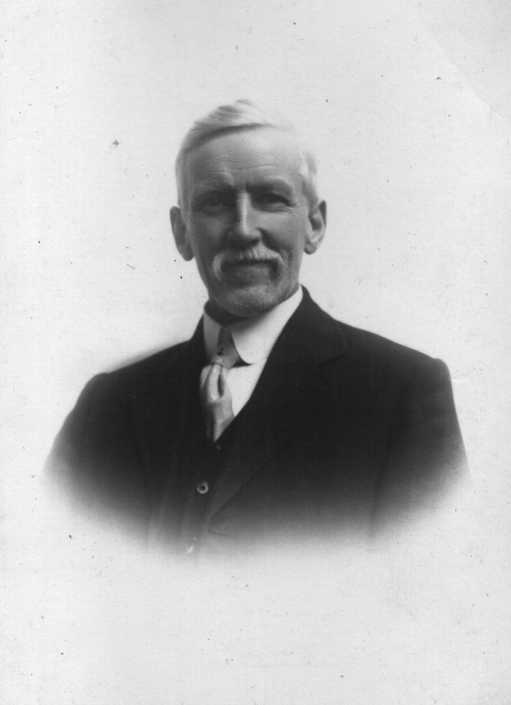
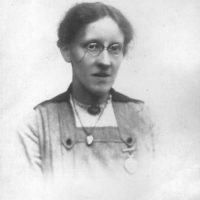
John William and Priscilla had nine children. The first four children were girls and the final five were all boys. The first born was Elsie who was born on the 27th July 1885. She never married and always lived with her parents. Following the death of her mother in 1927, Elsie acted as the housekeeper for her father and the two brothers who were still at home at that time. Arnold married in 1928 and Albert in 1933 leaving Elsie at home with her father but the week after Albert left home, Elsie died on the day before her 48th birthday. John William didn’t like the idea of living alone after living with such a large family and moved in with his daughter Sarah Jane and her husband, Joe Garside. He lived with them until his death.
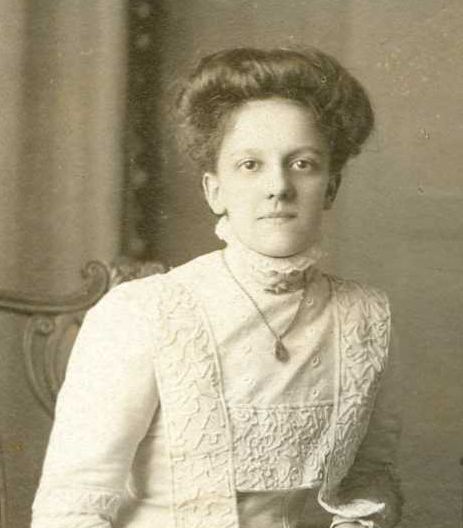
The second child was Ada who was born on the 7th June 1887. Ada married Frank Riley the son of Henry Riley and Ellen Whiteley (sister of George Shaw Whiteley who founded the blacksmiths at the bottom of Ogden Lane) on the 4th July 1914 at Bridge End. Frank served in the West Riding Regiment in WWI and survived the conflict.
Ada became a member of Bridge End church in March 1904 and was the oldest and longest serving member when the the church finally closed its doors on the 27th June 1976. She lived at Crowtrees Lane all her married life, losing her husband Frank in 1970. They had two sons, Harold (1918-1991) and Norman (1920-1991).
I remember going to see Ada on her 90th birthday during the Queen Elizabeth Silver Jubilee celebrations in 1977. She died in Halifax Infirmary on 25th November later that year.
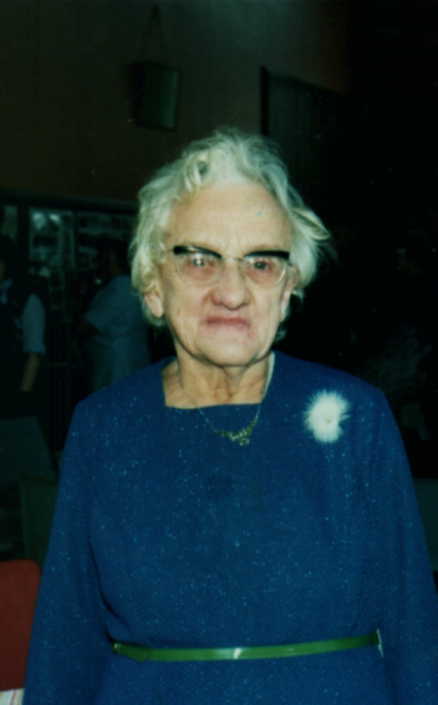

The third child was Sarah Jane who was born on the 16th July 1889. She married Joe Garside the son of Dyson Walker Garside and his wife Elizabeth Ellen at Bridge End in September 1918 whilst on home leave from service with the Highland Light Infantry in WWI. They lived at Greenhead Lane, Rastrick in their early married life but later moved to 5, Garlick Street. They had no children. Sarah Jane, who was always known as Aunt Jinnie died in January 1959 whilst Joe passed away in January 1967.
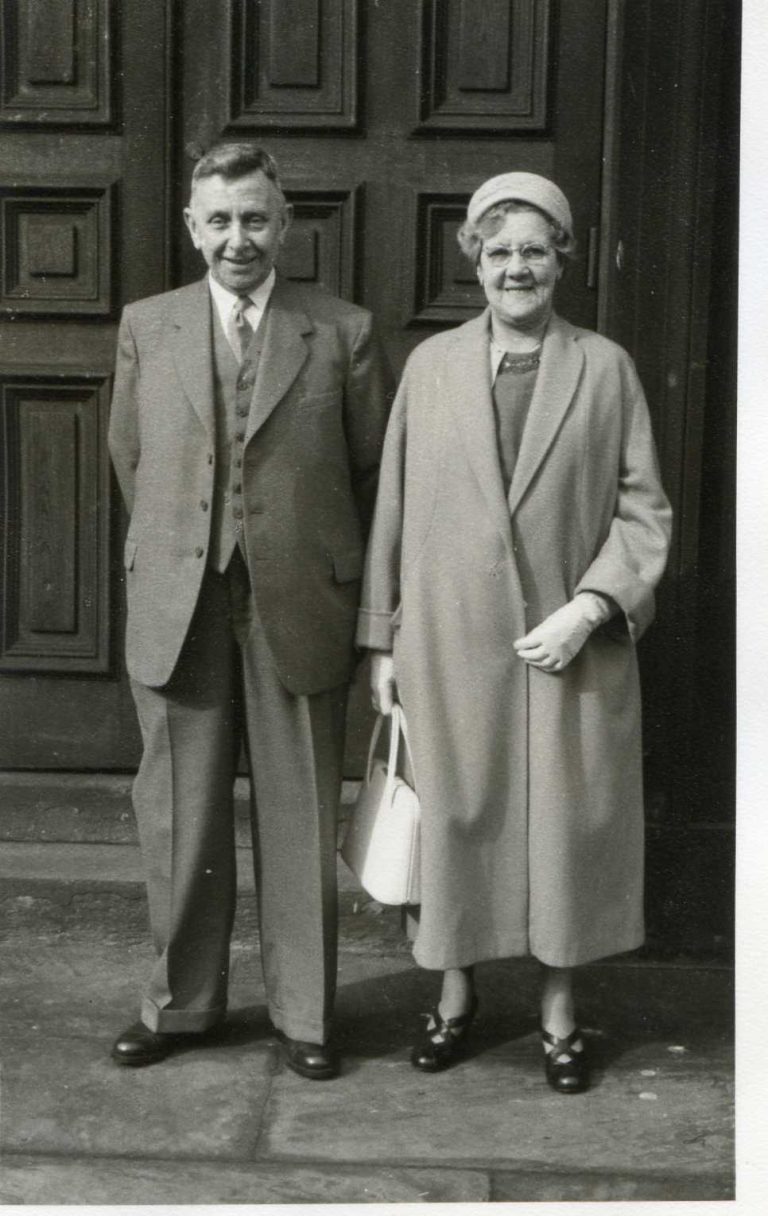
Emma was the fourth child, born on the 23rd March 1892. She is shown on the 1901 census when her family lived at New Hey Road but there are no known photographs of her as she died on the 23rd September 1904 aged 12 years. Her father purchased a new grave plot for his daughter in Line 14 Row 51 at Carr Green Cemetery, the plot in front of where the three Bottomley sisters from the previous generation were interred a few years later.
We know even less about the fifth child who was named John. He was born in April 1895 but died April 1897 aged just 2 years. He was buried at Bridge End in the grave of his grandparents, John and Jane Bottomley as there was a space there. I remember family discussions when I was a child of where certain relatives would be buried as there was was room in such and such a persons final resting place and there was no point in having a new grave dug when there was room in others. Well, that’s how it seemed anyway.
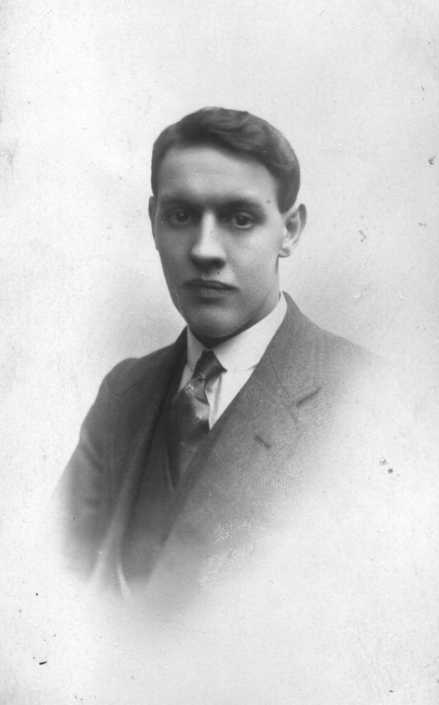
Child number six was called Frank. He was born on the 25th February 1897 and married Nellie Wood, daughter of Tom and Emily Wood of Walker Square, New Road, Rastrick. They married at Bridge End church in June 1925. They had three children, Wilfred (1925-2014), Dorothy (1930-2018) and Donald (1936-1967).
Frank took over from his father as secretary of New Road Sunday School in 1914 and served on various other committees there. He was a teacher and superintendent and a cricketer of some repute. He died suddenly at home on the 26th September 1952 aged 55 years.
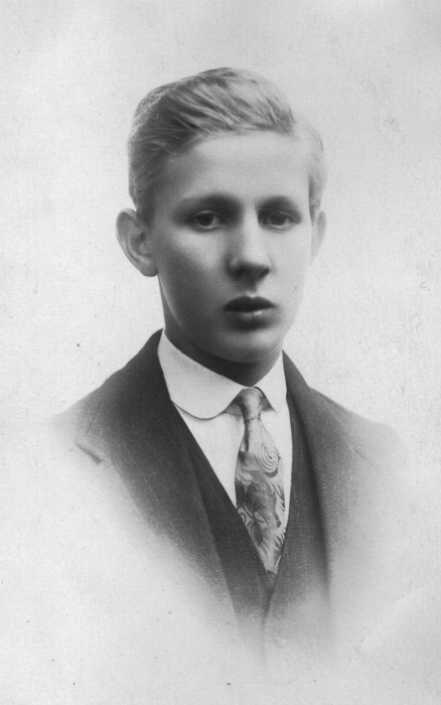
Albert Bottomley was born on the 11th September 1901 at 46, New Hey Road, Rastrick which also had the address 1, Providence Place. He lived at home until just prior to his marriage when he took a job as caretaker at the William Henry Smith School, Boothroyd, Rastrick. Albert worked there until 1945 before returning to his former job in engineering.
He married Hilda Blackburn at Bridge End on the 16th September 1933. Hilda was the daughter of Herbert and Caroline Blackburn of Rastrick. Herbert worked as a fuller at Spout Mills and I remember her telling me how he used to carry wet wool to the ‘woozer’ which was a giant centrifugal spin drying machine. This meant that he had damp clothing on his shoulder for most of the day and resulted in him having arthritis in his shoulder in later years.
Albert was a keen cricketer and was on many committees at New Road Sunday School as well as being a teacher and secretary. He attended at the 1922 FA Cup Final at Stamford Bridge to see Huddersfield Town win the trophy for what is still their only success in their history. He gave me the programme from the match when I was a teenager, which I still treasure to this day.
Albert and Hilda had one son, Trevor (1934) who many will remember also for his love of cricket. Trevor collapsed and died during a game at Badger Hill whilst playing for his beloved club in 1989.

Arnold Bottomley was my grandfather. He was born on the 22nd May 1905 at New Road, Rastrick and was the last of the nine children of John William and Priscilla. He worked as a joiner and carpenter at Thomas Bottomley’s but during the 2nd WW, he worked in London on bomb damage repairs.
Like his brothers, Arnold was a very good cricketer and captained the New Road 1st XI for several years, winning all the major honours in the Huddersfield Association League.
Arnold married Edith Hill, the daughter of Charles (Charlie) and Emma Hill of Thornhill Road. Charles had been employed as a silk dresser but later worked as an engine tenter in the stone quarries. Arnold and Edith married on the 24th November 1928 at Bridge End.
They had three daughters, Muriel (1929), Eileen (1930) and Christine (1932) who later became my mother.
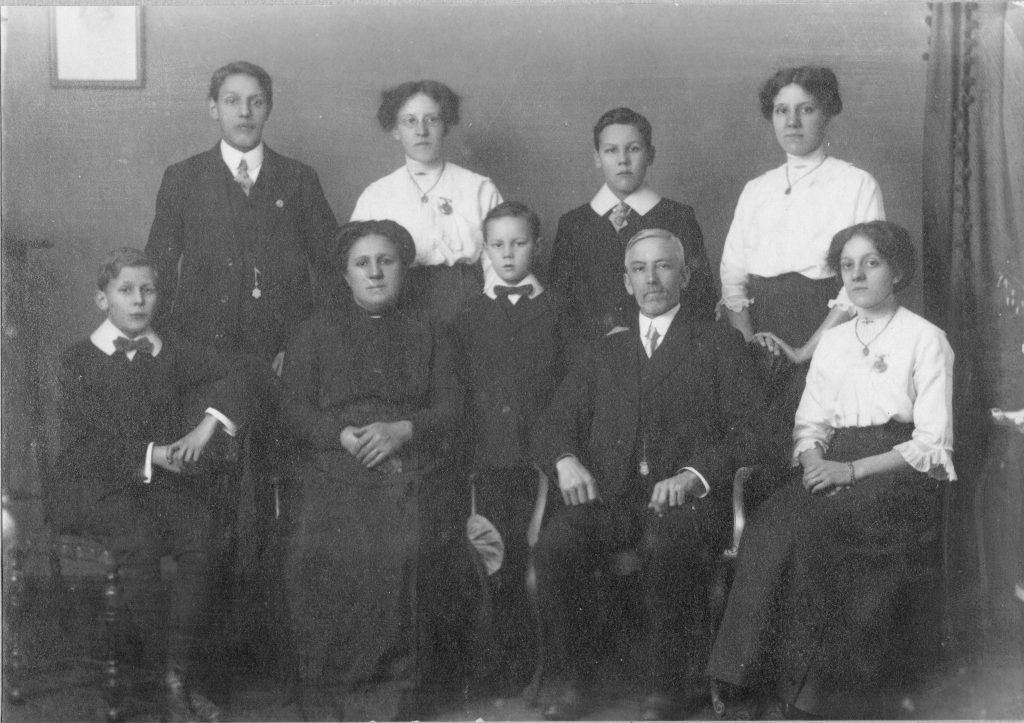
A family photograph from 1911 showing John William Bottomley and his wife Priscilla (Marsden) along with seven of their surviving nine children.
Back Row L-R. Fred, Elsie, Frank and Sarah Jane
Front Row L-R. Albert, Priscilla, Arnold, John William and Ada
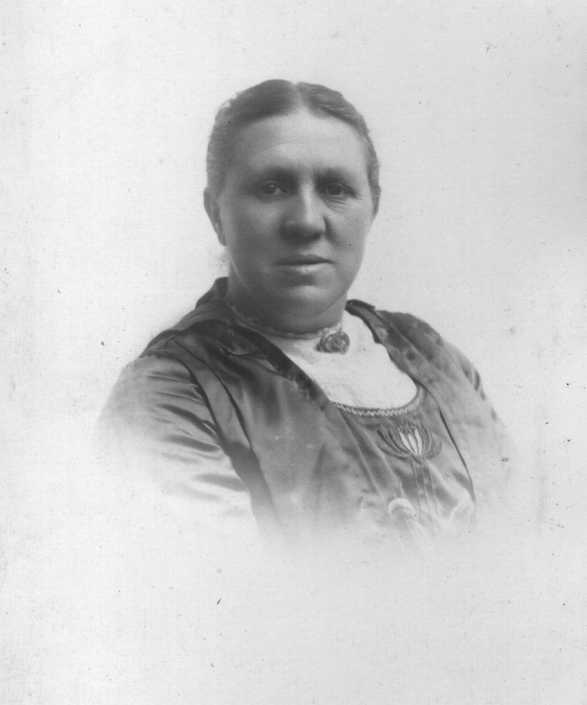
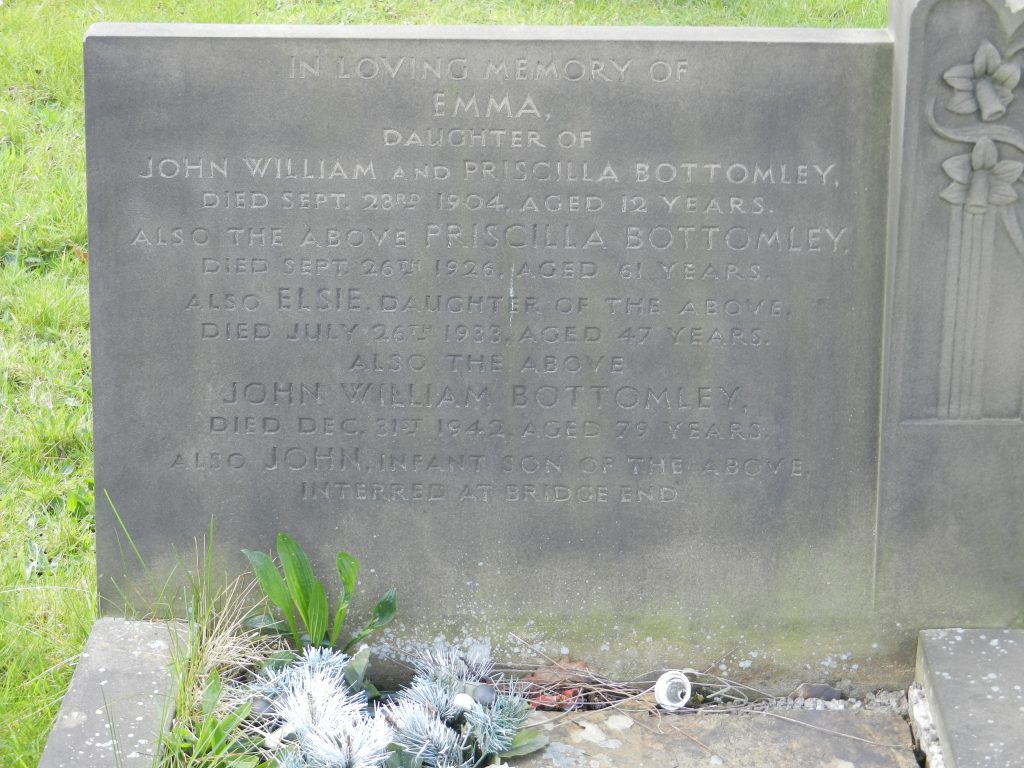
Priscilla passed away on the 26th September 1927 aged 61 years and was buried three days later at Carr Green Cemetery with her daughter Emma. Daughter Elsie was interred in the same grave when she died in 1933 and the final family member was John William, who died on the 31st December 1942, aged 79 years.
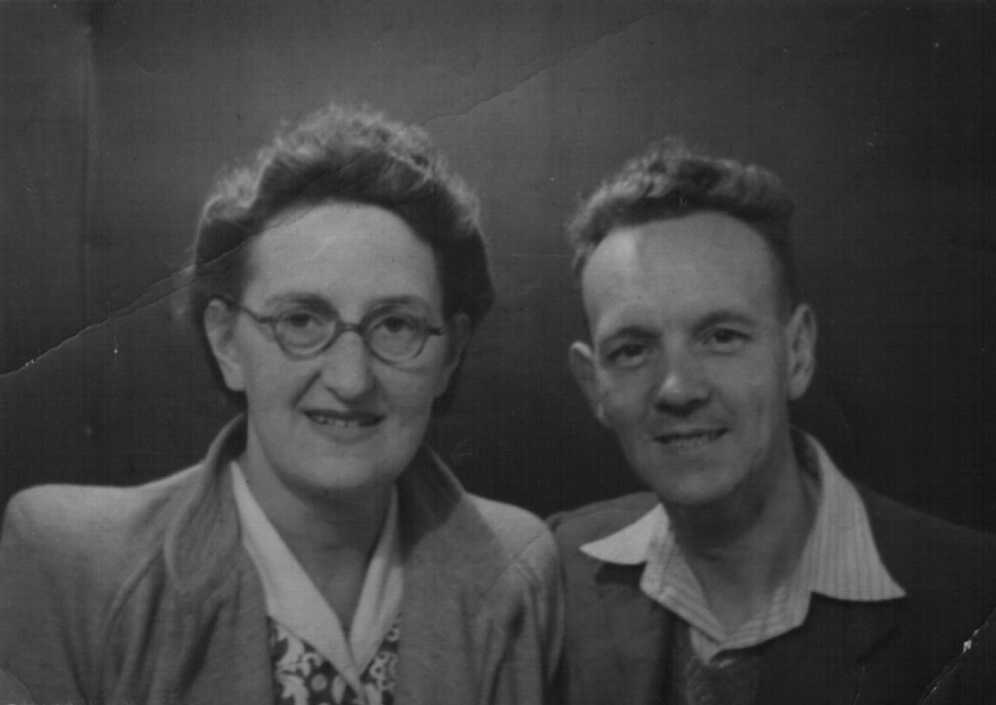
Continuing with my line of the Bottomley family, Following Arnold and Edith’s marriage at Bridge End in 1928 the couple went to live at 38 Tofts Grove, Rastrick where their first daughter, Muriel, was born on 6th March 1929.
A second girl, Eileen was born on the 7th November 1930 and their third and final child, Christine was born on the 19th December 1932.
They lived at Tofts Grove until around 1970 when they moved into a more manageable flat at Regents Close which was ideal for Arnold as it would have taken him all of one minute to walk to New Road Sunday School and two minutes to walk in the opposite direction to the fish chop on a Friday.
Pictured to the right is the house where Arnold and Edith spent most of their married life.
Arnold was involved in many activities over his life at New Road and appeared in many of the early shows that were produced just after the 1st WW. He loved music and was both pianist and conductor at anniversary services. As well as being a trustee, he took an active part in the Band of Hope movement, Singing Class, Men’s Institute, and the Billiards team. As mentioned earlier, he was a good cricketer and when his playing days ended, he went on to become an umpire in the Huddersfield Association League where his brother Albert was also the President at one time.
I remember when he lost the use of his arm and hand following a stroke in his later life but Leslie Hargreaves concocted a rest for his billiard cue which consisted of an old alabaster trophy base with a circular metal ring welded onto it. This allowed Arnold to play with one arm, placing his cue through the loop, taking his shot and then picking up the rest with his cue and moving it on for his next shot. It was amazing to watch.
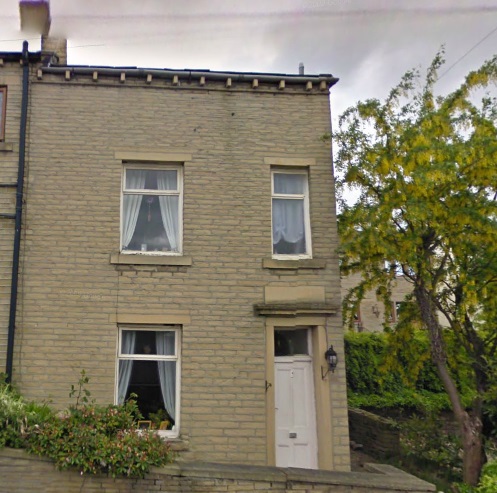
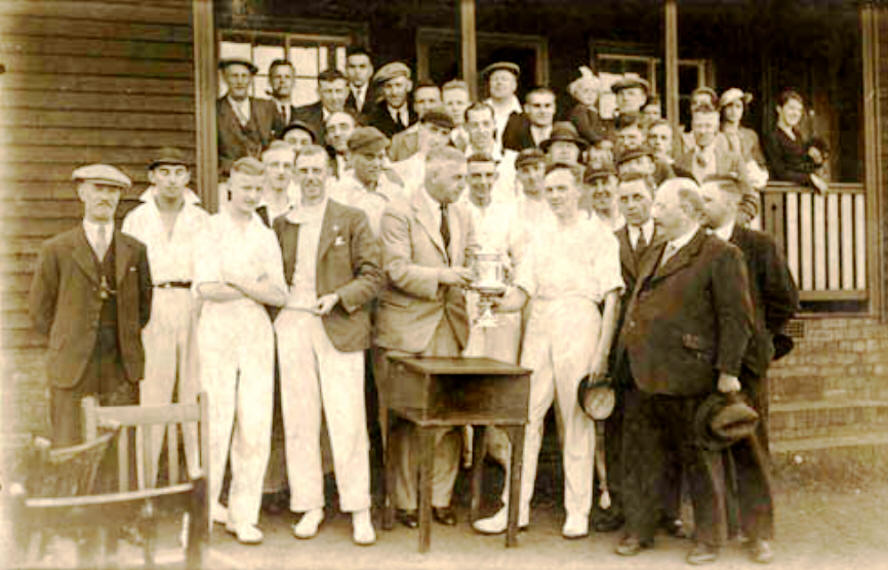
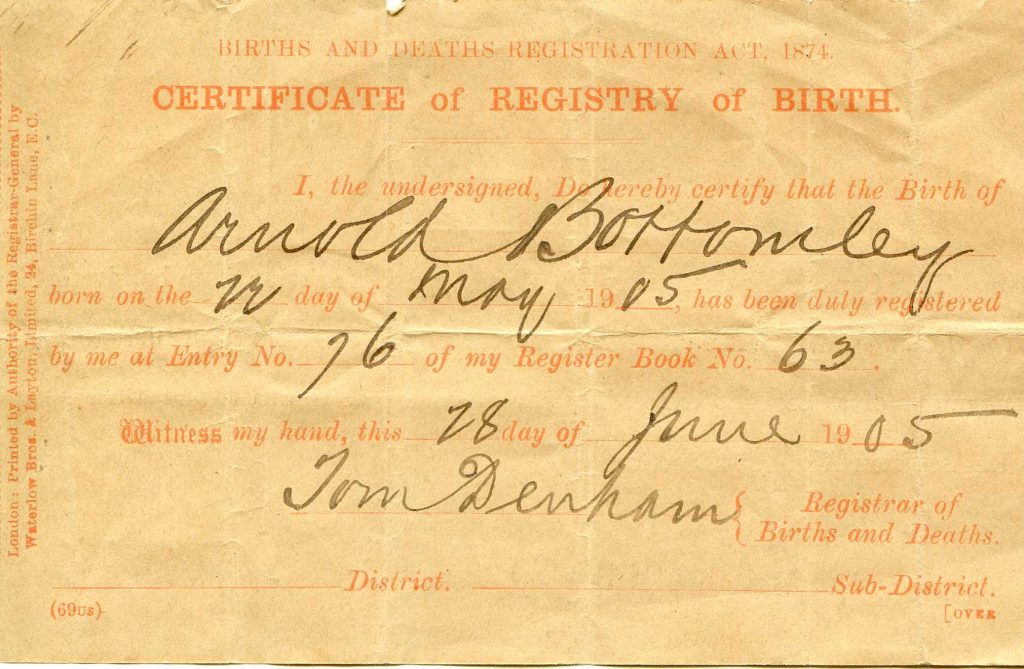
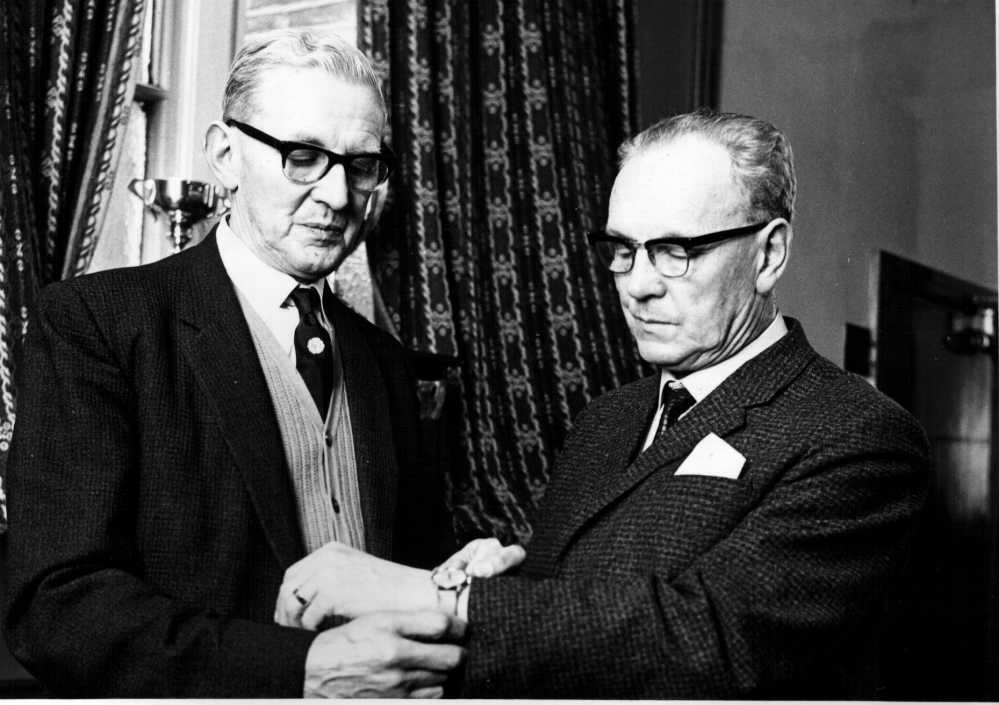
The above pictures show (from left-right) Arnold receives the Lumb Cup as captain of New Road Sunday School cricket team – 1905. The birth certificate of Arnold – 1971. Arnold receives a watch in recognition of services to cricket from his brother Albert, the President of the Huddersfield Association Cricket League.

A family photograph showing Arnold and Edith Bottomley with their three daughters and their sons-in-law along with their seven grandchildren. I am the one who appears to be having fun and laughing loudly though I don’t know why as I seem to recall that I was wearing light blue trousers with large white buttons on the front, a white shirt with a bow-tie matching the trousers. Thanks Julia and Brian Oates for whom I was a page-boy that day.
Back Row L-R. Christine and Tom Eccles, Muriel and Arthur Lawson, Eileen and Rowland Towell.Centre Row L-R. Edith and Arnold BottomleyFront Row L-R. Kathryn Lawson, Anne Lawson, Andrew Eccles, Susan Towell, Peter Eccles, Karen Towell, Stephen Eccles
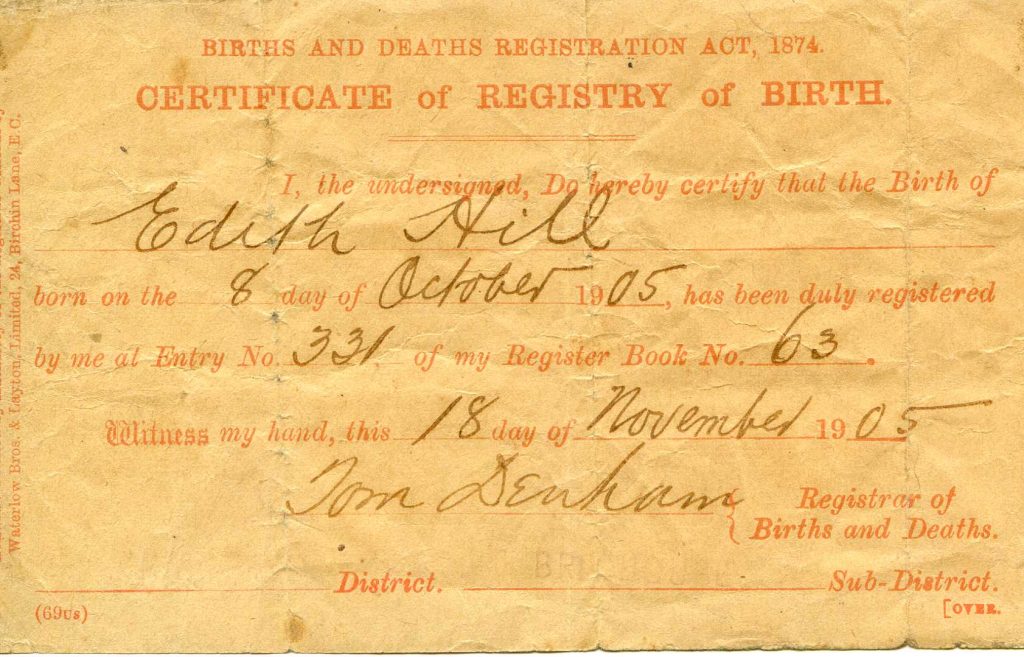
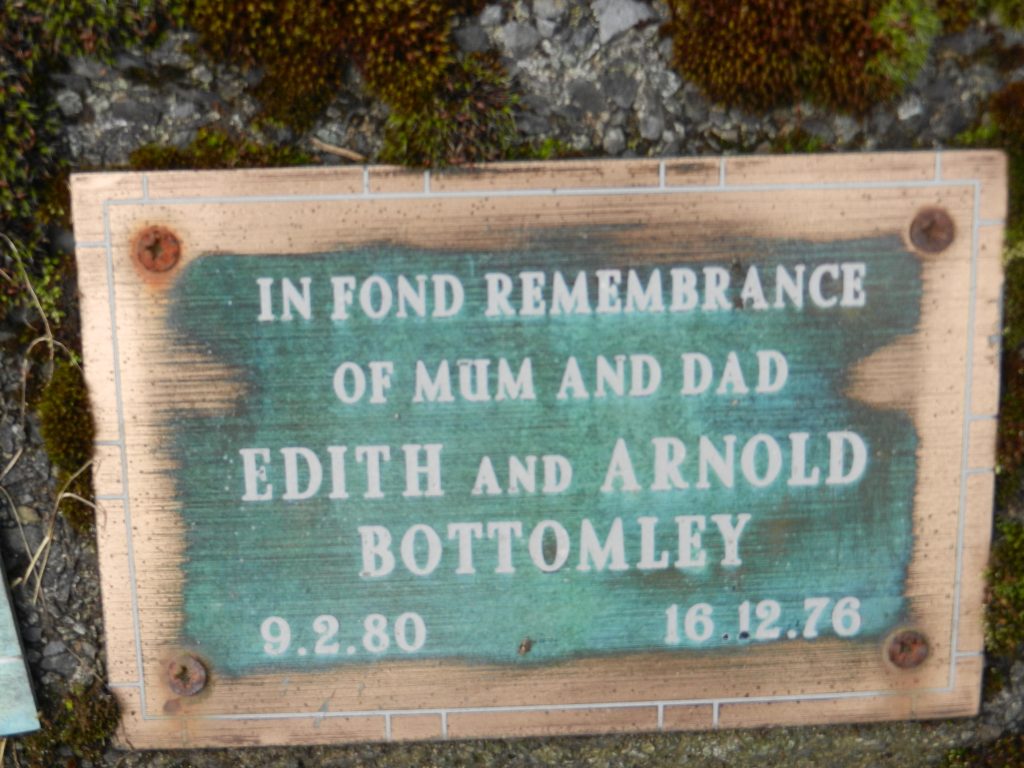
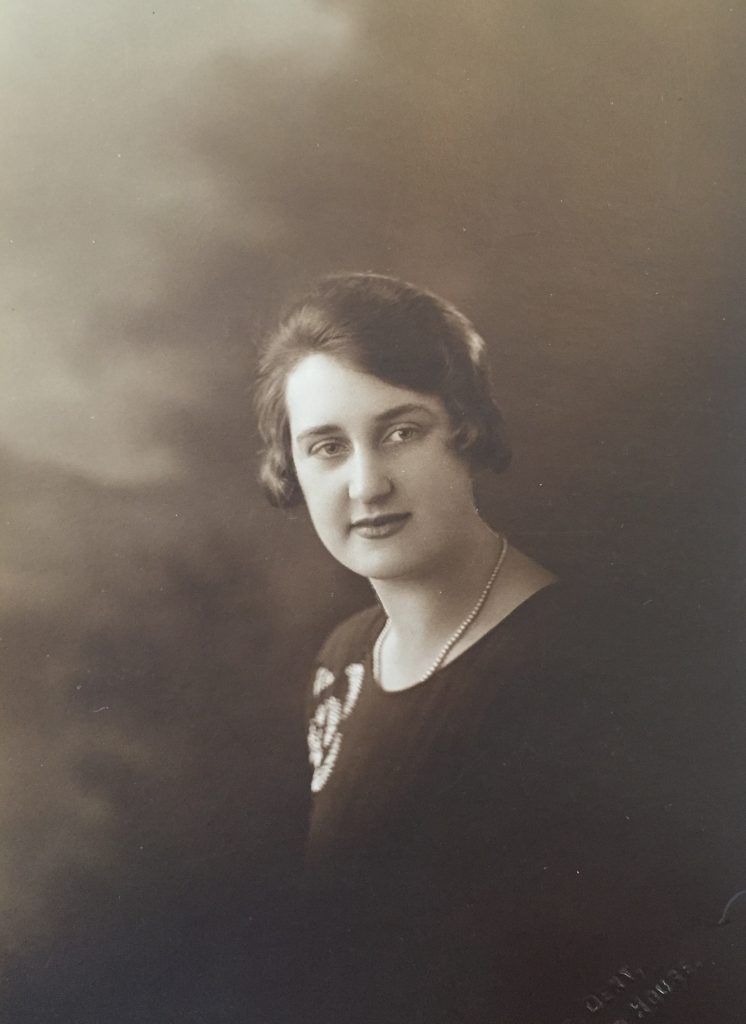
Arnold died on the 16th December 1976. He never fully recovered following a stroke. His wife, Edith died on the 9th February 1980 after a short illness.
They were both cremated at Fixby Crematorium and their ashes placed in the rose garden at Carr Green cemetery.
Their brass plaque, held on with rusty screws, appears to have been cleaned on the front causing a discolouration to the brass.
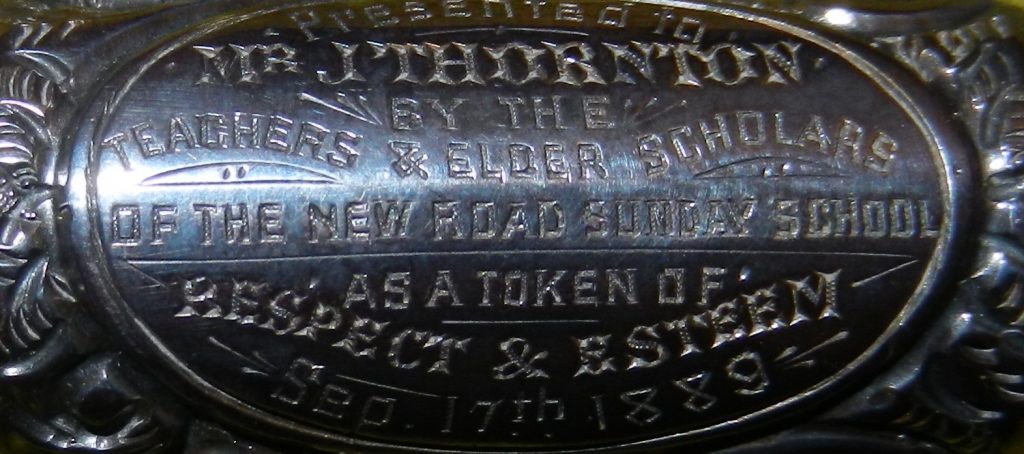
An engraved ivory and silver baton used by Arnold when he was a conductor at New Road. The baton was originally presented by the Sunday School to John Thornton in 1889 (same John Thornton who married Sarah Jane Bottomley in 1871) but he gave it to Arnold when he took over as the conductor in the 1930’s.